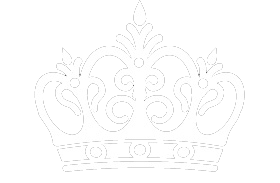"Carats in Gold and Gemstones: A Timeless Measure of Value and Purity"
- kukkikja
- Dec 2, 2024
- 3 min read

The history of using carats as a unit of measurement for gems and gold spans centuries, evolving from ancient practices to its modern standardization. The dual role of carats, especially in measuring gemstones and gold purity, has its roots in ancient trade and continues to be a cornerstone in the jewelry industry today.
Ancient Origins in Greece
The term "carat" originates from the Greek word kerátion (κεράτιον), meaning "little horn," which referred to the seeds of the carob tree (Ceratonia siliqua). These seeds were remarkably uniform in weight, making them an ideal standard for measuring small, precious items like gemstones. This practice began in the Mediterranean region and was later adopted by the Romans and other cultures.
Over time, the term "carat" also became associated with gold, creating the foundation for what we now refer to as carat in gold—a measure of its purity.
Middle Ages
During the Middle Ages, the carat was widely used for weighing gemstones and began to gain prominence as a measure of gold purity. However, there were regional variations in how a carat was defined:
In the Arabic world, it was called qirat and represented a slightly different weight.
European countries also adopted variations of the carat based on their local trade systems, leading to inconsistencies.
In terms of carat in gold, the system of measuring purity evolved where 24 carats represented pure gold (24 parts gold out of 24 total parts). This method of describing the fineness of gold became increasingly standardized over time and remains in use today.
Modern Standardization
The globalization of trade in gemstones and gold during the 19th and 20th centuries made the need for uniform measurements evident. Efforts to standardize the carat culminated in:
The Fourth General Conference on Weights and Measures in 1907, where the metric carat was officially defined.
A metric carat was set as exactly 200 milligrams (0.2 grams), and this became the global standard for measuring gemstones.
For carat in gold, the definition of purity remained the same: 24 carats denoting pure gold. Gold jewelry, however, often contains other metals for strength and durability. For example:
18K gold is 75% pure gold, with 18 parts gold and 6 parts other metals.
14K gold is 58.3% pure gold, with 14 parts gold and 10 parts other metals.
Use in Gemstones and Gold
Gemstones:
Carats measure the weight of gemstones such as diamonds, rubies, and sapphires. One carat equals 200 milligrams, and smaller stones are often measured in "points," where 1 carat equals 100 points. For example, a 0.50-carat diamond is described as "50 points."
Carat in Gold:
Carat (or karat) measures the purity of gold, indicating how much of the metal is pure gold versus alloyed metals.
Pure gold is 24 carats (100% gold). Jewelry with lower carat values—such as 18K or 14K—has gold mixed with metals like silver, copper, or palladium to improve its strength and wearability.
Present Day
Today, the carat remains the universal standard for measuring gemstone weight and gold purity. Carat in gold, in particular, is a key factor in determining the value and quality of gold jewelry. Its historical journey reflects the evolution of trade and the global need for standardized measures in the precious materials industry.
The dual application of carats—for weight in gemstones and purity in gold—ensures clarity and fairness in the jewelry market, allowing both buyers and sellers to make informed decisions.

























Comments